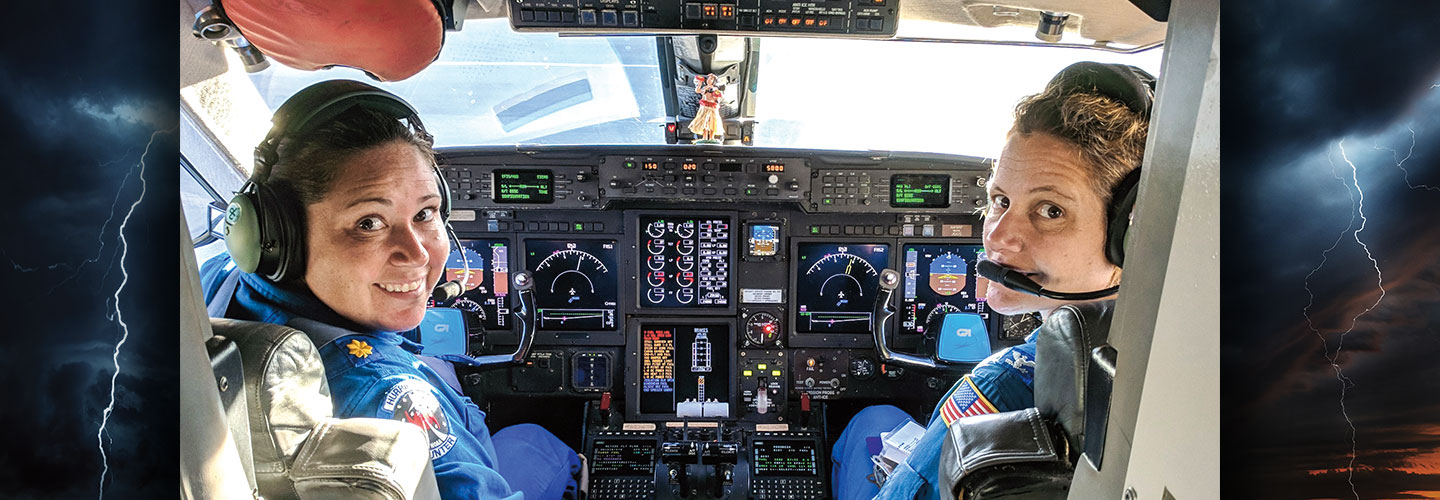Pilot Rebecca Waddington was flying through the stormy night sky. Sudden bursts of wind jostled her small jet. It was September 2020, and Waddington was flying over the Gulf of Mexico, off the west coast of Florida. It was one of the bumpiest flights of her life. She was passing through a storm that would become Hurricane Sally.
Most pilots try to avoid dangerous weather. But for Waddington, it was just another day on the job. She and her crew are hurricane hunters with the National Oceanic and Atmospheric Administration (NOAA). They work together to collect information about these deadly storms—and keep people on the ground safe.
Pilot Rebecca Waddington was flying through the stormy night sky. Sudden bursts of wind jostled her small jet. It was September 2020. Waddington was flying over the Gulf of Mexico. It is off the west coast of Florida. The flight was one of the bumpiest of her life. She was passing through a storm that would become Hurricane Sally.
Most pilots try to avoid dangerous weather. But for Waddington, it was just another day on the job. She and her crew are hurricane hunters. They work for the National Oceanic and Atmospheric Administration (NOAA). They work together to collect information about these deadly storms. That information keeps people on the ground safe.

